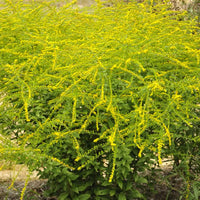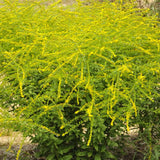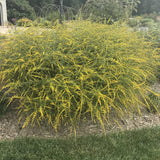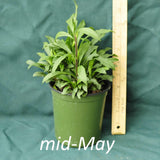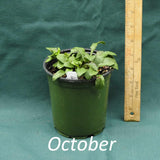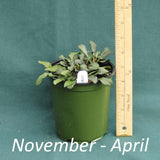The dogwoods are now leafing out on November Hill, along with all the big trees, so we’re close to being embraced in our spring/summer privacy screen of lush foliage. I love how the trees muffle the sounds, too, though once the cicadas start up later on, it’s like we’re in a white noise machine.
I’m keeping up with the basic chores these days, and getting a few extra things done a day. We’re on day 3 of 80+ degrees with a cooling period coming tomorrow, so I’ve put off major garden bed weeding for cooler temps.
In the potager, we got the cucumber teepee set up and planted. And the lettuces have been devoured by bunnies! I have some chicken wire, so I have to get out there with it and try to make a cover for that bed, but also wondering if I should just put it on the fence all the way around. Not sure how I would do the gate though. They aren’t messing with anything except the lettuce, and interestingly, not until the third night after planting, when ONE leaf was eaten. The next night though - wham - they ate every lettuce leaf down to the ground.
We love the brown bunnies and I in fact named this garden space Brown Bunny’s Potager. Either a mistake or accurate, depending how you look at it!
I know many readers here have gardens - any tips on bunny control?
Because we are signed up for a weekly large CSA share that starts next week and goes through mid-June, I’m not too worried about how much produce we get from this between now and then. My main goal was to get the beds in place with something in them to see how this space does for vegetables and get a test run going.
I’ll also be planting some herbs and native flowering plants in here (to start, coreopsis, coneflower, aster, and mountain mint), and have an idea to put in a muscadine vine on a proper trellis along the back fence of the space. I already have two hazelnut trees in the two back corners, and a space dedicated to a 2-bay compost bin. We’re also strongly considering putting bee hive #3 in the center of the potager, as Tom Seeley’s recommendations on keeping bees say to space them out rather than together in one spot.
What I really want is for this space to be a little oasis on this side of the farm, and to offer some buffer along the side of the property line shared with neighbors. I love the idea of working in this garden with horses on three sides. We’ll get there this year, I think, if I can figure out how to keep the plants mostly safe from being nibbled down.
As you can see, I already have a garden assistant ready and waiting! Thanks, Redford donkey!!





